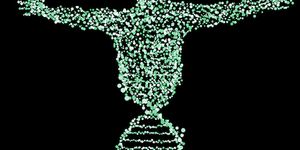New Tool Shows Brain Cells in Action
Astrocytes are a special type of brain cell; shaped like stars, they are thought to have a critical role in the development of several neurological diseases including Alzheimer’s, Huntington ’s and Lou Gehrig’s diseases. Now researchers at UCLA have created a new technique for observing these cells in real time, while they remain deep within the brain of a living mouse. The work, reported in Neuron, will help investigators see how astrocytes impact communication between nerve cells.
"We're now able to see how astrocytes and synapses make physical contact and determine how these connections change in disorders like Alzheimer's and Huntington's disease," explained the lead author of the work, Baljit Khakh, a professor of physiology and neurobiology at the David Geffen School of Medicine at UCLA. "What we learn could open up new strategies for treating those diseases, for example, by identifying cellular interactions that support normal brain function."
Brain tissue is made up of several kinds of cells, and it can be challenging to model that system. For many years, researchers have been trying to understand how the tendrils that grow off of astrocytes impact synapses, where neurons meet and communicate with one another. The UCLA investigators have addressed this issue.
With their new method, various colors of light go through a lens and magnify tiny objects the can’t be seen with the naked eye, and are much smaller than what scientists could see with previous techniques. Now, astrocytes and how they interact with synapses is observable in mouse models of health and disease.
"We know that astrocytes play a major role in how the brain works and also influence disease," noted first author Chris Octeau, a postdoctoral fellow the Khakh lab. "But exactly how the cells accomplish these tasks has remained murky."
Scientists will now be able to work towards answering important questions in brain disease about cellular behavior.
"This new tool makes possible experiments that we have been wanting to perform for many years," added Khakh, a member of the UCLA Brain Research Institute. "For example, we can now observe how brain damage alters the way that astrocytes interact with neurons and develop strategies to address these changes."
Sources: AAAS/Eurekalert! Via UCLA, Neuron









